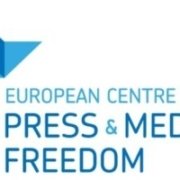In Italy +51,6 % of threatened, but none talk about alarming trend
Questo articolo è disponibile anche in:
OSSIGENO – 22nd September 2020
Some considerations on what happened in August in Italy where the alarming data released by Ossigeno and the Minister of the Interior had no political or media coverage
During the summer, threats and insults continued to strike many journalists and bloggers engaged in collecting and disseminating information of public interest that some individuals have liked to hide or distort for their own benefit. Ossigeno resumes business after the summer break, with an overview of what happened and making some assessment.
The episodes were numerous, as feared. The frequency and manner of these attacks are as worrying as in the past and are now known to anyone who wants to know how about the trend of these sad events. This is not a random sequence of events but a systemic phenomenon that affects the freedom of the press like an occupational disease and which therefore requires prophylaxis, a series of remedies and appropriate treatment to avoid causing serious damage to those affected and to society as a whole.
We, the Ossigeno monitoring staff, have been able with great difficulty to identify this phenomenon ten years ago and to convince everyone of its existence. Until few years ago very little was known about this disease. Its existence was denied. Threatened reporters blamed themselves. They and what they suffered were rarely talked about. This does not happen now, because Ossigeno and various other institutions have demonstrated the facts and these have changed the perception of the question, have demonstrated the nature, the causes and the scale of the phenomenon. Ossigeno has contributed to this cause by publishing thousands of proofs, dozens of analyses and reports and a list of possible and necessary remedies in a democratic country to limit the serious consequences. To assuage the disbelievers, Ossigeno has publicly documented 4106 clinical cases that with scientific rigour say what this disease is and why it spreads so frequently, because the number of threatened reporters continues to be high. This is the situation and it is getting worse.
Suffice it to say that in the first six months of 2020, before the summer break, Ossigeno documented 250 intimidations and threats against as many reporters. Other observation centres have reported fewer but, as we have said, this depends on the fact that they observe only a part of the phenomenon and put fewer observers in the field and for a shorter period. Ossigeno can say it with the expertise acquired in 13 years of monitoring: this sea is very fishy. Ossigeno also would catch even more fish if it was able to put more boats in the sea.
Today, however, the salient figure is not the number of journalists threatened in Italy, whether between January and June 2020 there were 250 as Ossigeno says, or 87 as the Ministry of the Interior said, or only 3 as claimed by the observatory of the European Commission. The pertinent fact is that in Italy there are journalists under threat, and they are too many for a free country like Italy. The fact is that this has been unquestionably established for some time now and this phenomenon occurs in Italy with serious social consequences, putting many journalists at risk, damaging freedom of information and democracy and limiting the participation of citizens in public life. . The most salient fact is that little or nothing is done to prevent it.
Faced with all this, Ossigeno invites people of good will to reflect on the fact that in this situation anyone who wants to show their concrete commitment to solve the problem must do it and yet cannot do it by merely reporting new episodes, expressing solidarity with the victims but without taking up the concrete problems the journalists have to solve as a result of threats, or simply telling others what they should do. They themselves, journalists and non-journalists, individuals, associations, institutions, should play their part.
Some events of this summer show how necessary it is to overcome an alarming stalemate. In mid-August in Italy, the story of the Italian journalist Claudio Locatelli who was arrested and unjustly detained for three days in Belarus during the protests against Lukashenko and then, fortunately, was released without consequences, aroused concern and media attention. Many newspapers done well to have talked about it. However they did not speak in the same days with as much attention about a truly alarming figure concerning what happened in Italy: a figure released on August 15th by the Minister of the Interior, according to which in 2020 in Italy the threats to journalists increased by 51.6 per cent.
It is a worrying figure that indicates the increase in an already high level of intimidation. Many knew nothing about it. There appear to be no comments from the political world. The news on the web, TV, press agencies and some newspapers have limited themselves to publishing the press release of the Interior Ministry which lists this figure along with the trends of other crimes. It should be added that already at the end of June, the same data had been released for the first time by the Interior Ministry together with a statement by the Minister, Luciana Lamorgese, expressing her concern. Even in June it had gone unnoticed.
Can we recover from this inexplicable summer indifference in the autumn? Can the newspapers be requested to talk about it? To inform readers? We really hope so.
If we passively accept that political world, the newspapers, the very organizations that defend press freedom can look the other way and remain silent in the face of such alarming data, it is useless to denounce new violence and abuse. To move forward, we must find ways to overcome this inexplicable shroud. wt
ASP





Leave a Reply
Want to join the discussion?Feel free to contribute!